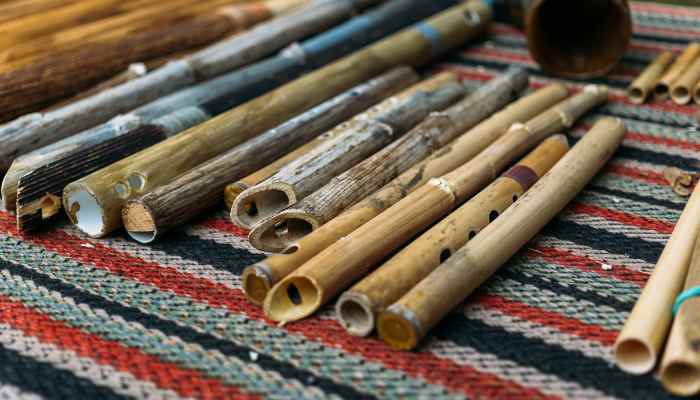Woodwind instruments are one of the few musical instruments that have an age-old history with them. For centuries, the sound of woodwind instruments has enchanted people and made a place in their hearts.
But have you ever wondered where this sweet, warm, yet captivating and powerful sound comes from? What is the secret mechanism that works so well in this instrument that makes our hearts go amazed?
Let’s find out!
Basic Principles of Woodwind Instruments:
If you want to find out the core point of woodwind instruments, it is always the vibrating air column. The air has a significant role here. When the musician blows air into the instrument, it generates vibrations that produce sound.
Meanwhile, woodwind instruments typically have two types – the reed instruments and the flute instruments. Each has its own characteristics that play a particular role in its sound production.
Now, let’s move on to this article’s most important aspect: how they actually produce the sound and the magic behind it.
How Woodwind Instruments Produce Sound:

- Reed Instruments
Reed instruments, in general, have a thin piece of cane called a reed. Such examples of reed instruments are saxophones, clarinets, oboes, etc. What makes them distinct from other instruments is you have to blow the air through the reed. And as it vibrates against its body, it creates various musical notes. You’ll find instruments with single-reed and double-reed that have their specifications and qualities.
- Flute-like Instruments
On the other hand, we have flutes, which is a woodwind instrument but slightly varies from reed instruments. In flutes, you have to blow the air directly inside the instrument, resulting in the vibration of the air column. In case of adjusting the tone, you can change the finger positions by opening and closing the keyholes.
Understanding Woodwind Instrument Families:

Now, let’s head to different woodwind instrument families to understand their construction and sound production better.
- The Flute Family
The flute family includes instruments like the concert flute, piccolo, and alto flute. Flutes are widely known for their bright and heart-fluttering tones that have an essence in history. It is also among the oldest surviving instruments throughout different cultures and traditions.
- The Clarinet Family
The clarinet family comprises instruments like the Bb clarinet, bass clarinet, and Eb clarinet. Clarinets have their own popularity base and are a famous component of orchestras and bands. It is also notable for its distinctive sound quality.
- The Saxophone Family
The saxophone family has various sizes of instruments that range from soprano to baritone. Renowned for their expressive capabilities, saxophones have become an integral part of jazz and contemporary music.
- The Double Reed Family
An example of a double-reed family instrument is the oboe and bassoon. Both have two vibrating reeds that produce notable sounds. These instruments have a rich, warm tone and play significant roles in classical compositions.
Comparison of Woodwind Instruments to Other Instrument Types:
Woodwind instruments differ significantly from other instruments, like brass and string instruments. In brass or string instruments, the player produces sound through their lips or by clinching the strings. As for woodwind instruments, you have to produce the sound through vibrating air columns.
Woodwind Instruments in Different Music Genres
Woodwind instruments have their own share in different musical genres, including classical, jazz, rock and even traditional music. Because of their versatility, it has a prominent place in classical music and orchestral masterpieces. Moreover, its high-pitched dominant sound makes it the lead component in jazz music. You can also find its roots in traditional and folk music.
Popular Woodwind Instruments:
- Flute
With its smooth design and delicate sound, the flute is a leading instrument in many orchestras and ensembles. It offers a wide range and is relatively easy to learn, which makes it a popular choice for beginners.
- Clarinet
The clarinet’s smooth tones and expressive nature make it a versatile instrument suitable for various musical genres, from classical to jazz.
- Saxophone
With its soulful and captivating sound, the saxophone is eminent in jazz, and it also excels in other genres, including pop and rock.
- Oboe
The oboe’s distinct timbre gives it a unique place in the orchestra, often representing poignant and emotional themes.
- Bassoon
The bassoon’s deep and rich tones add a powerful foundation to orchestral compositions, making it an essential member of the woodwind section.
Famous Woodwind Players in History:
There are many great artists who have a place in history for their exceptional musical achievements. Here are a few of them:
Notable Flutists:
- Jean-Pierre Rampal
- Sir James Galway
- Emmanuel Pahud
Renowned Clarinetists:
- Benny Goodman
- Sabine Meyer
- Artie Shaw
Celebrated Saxophonists:
- Charlie Parker
- John Coltrane
- Kenny G
Distinguished Oboists and Bassoonists:
- John Mack
- Gustavo Núñez
- Milan Turković
Advantages and Challenges of Playing Woodwind Instruments
Playing woodwind instruments has many advantages, such as their expressive potential and wide tonal variety. However, to master these instruments, one has to be patient with them. You have to face challenges related to breath control, articulation, and finger technique.
Maintenance and Care of Woodwind Instruments:
Maintaining woodwind instruments is a crucial factor in the process of learning. However, it doesn’t take much hassle other than regularly cleaning and sanitising your instrument. Try to keep it in its correct storage to ensure its safety and long-lasting life.
The Future of Woodwind Instruments
With advancing technology, the future of woodwind instruments has exciting possibilities. For example, the future may look more compelling with innovative designs, world-class materials, and better sound production. It can also provide great accessibility and affordability for music lovers.
However, whether you play an instrument or are just beginning to learn, it’s always important to clean and care for your musical instruments.
Conclusion
Woodwind instruments are truly a rare gem that we have to enrich our musical universe. It has a great power to lead and fill our hearts with joy and fulfilment. There is no barrier in music, and woodwind instruments are the perfect example of it. You’ll find them in every cultural or geographical history, perhaps in a different form.
So, if you have come this far, give it a try and don’t forget to pour your soul into them.
FAQs
- What is the oldest woodwind instrument?
The oldest woodwind instrument is believed to be the flute, which dates back to thousands of years.
- Can woodwind instruments produce dynamic tones?
Yes, woodwind instruments can produce a vast range of dynamic tones, from soft and light to powerful and vibrant ones.
- How often should I clean my woodwind instrument?
After every use, you should clean your woodwind instrument and have it professionally serviced regularly.
- Are woodwind instruments suitable for beginners?
Yes, many woodwind instruments, like the flute and clarinet, are beginner-friendly and popular choices for new musicians.